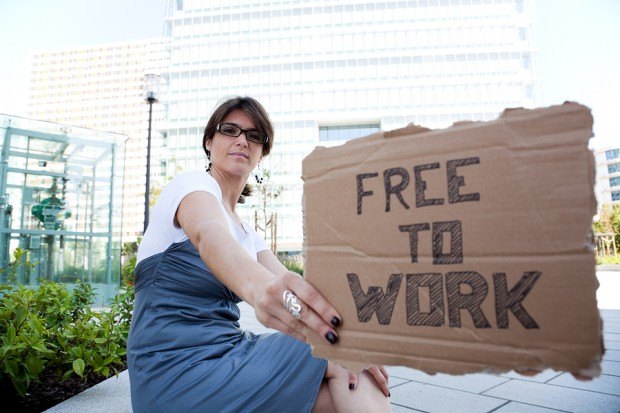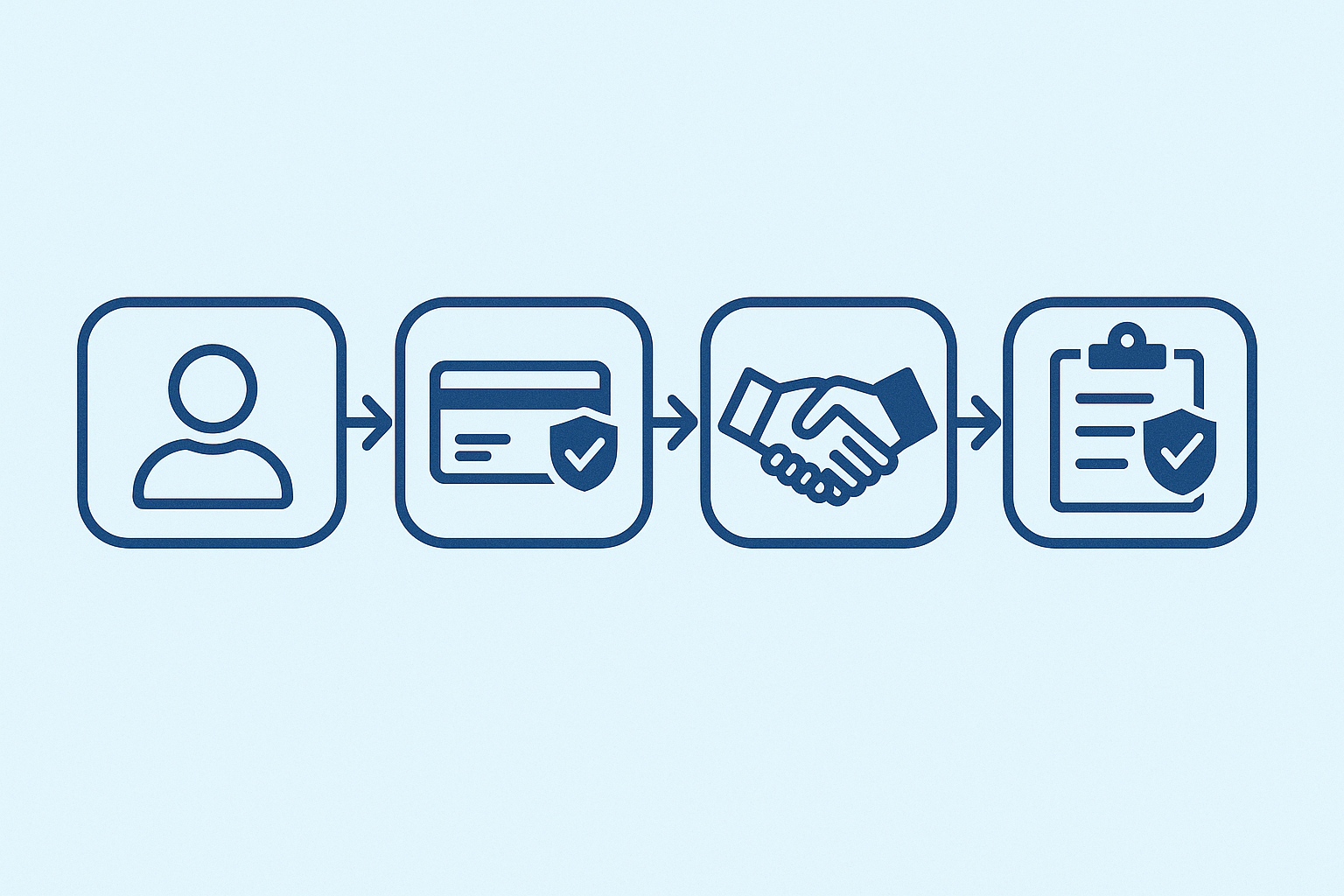After conducting almost 10,000 job interviews during 10 years as a human resources manager, Tom Kaminski says he thought he knew enough about the labor market to keep his own bout of unemployment short.
Executive Summary
An innovative program allows long-term unemployed workers to audition for jobs while employers try out their skills for free.Instead, he wound up out of work for three years before enrolling in Platform to Employment, or P2E, a privately-funded Connecticut program to help long-term unemployed workers land jobs. The attraction for employers: A fully paid-for audition of as long as eight weeks for job applicants who complete the five-week program.
He stands a better-than-even chance of finding work, judging from the program’s success rate. Of the 131 graduates of the first seven classes, 91, or 69 percent, moved to full-time employment. P2E has expanded to Dallas, Cincinnati, San Diego, Chicago and Newark, N.J., and efforts are under way to add another five cities by year’s end, helped by funding from AARP, CitiGroup Inc. and Wal-Mart Stores Inc. Joe Carbone, who started P2E, says the free tryout gives businesses a bigger incentive to hire than typical government job-help programs.
“For 40 years, this system has produced tax credits, on-the-job training—they’re junk,” said Carbone, president and chief executive officer of The WorkPlace, a regional workforce development agency that runs the P2E program in Connecticut. “Businesses don’t care about them anymore. They’re not going to be lured to expressly looking for a long-term unemployed person for a job replacement because of a $4,000 tax credit.”
Marketable Skills
What they do care about is P2E’s no-strings-attached offer of applicants with marketable skills who are suited for a posted job opening, Carbone said. If an employer decides to grant a tryout after the graduate completes the normal interview process, P2E pays the pro-rated portion of as many as eight weeks of the listed salary to allow the business to assess a possible hire.
Maria Batista, training director for EMGC Training Inc. in Derby, Connecticut, hired two P2E graduates. Her company, which provides instruction for environmental services such as home weatherization, accepted the full eight-week wage subsidy for one of the new hires.
“It does help the people who are down, who have been out of work,” she said. “You see the self-esteem boosting because they’re back in the workforce.”
What’s more, she said, “giving money to employers to take them on does help because the economy is bad.”
Elevator Pitch
The five-week P2E program is focused on honing job search skills, including training on social media such as LinkedIn and the development of an individual’s 30-second “elevator pitch” to outline his or her job skills. A daily routine of workshops and classes—including homework—is meant to help participants adopt a frame of mind akin to the schedule of a full-time job.
Kaminski, 42, who until May 2010 worked in the Stamford, Conn. office of Stockholm-based Securitas AB, said his three years out of work showed him the labor market had undergone big changes.
“It’s a perfect storm” of increased global competition, sluggish demand, technological advances and the rising expense of keeping employees on the payroll, he said. “When I got out, I discovered I did not know quite as much as I thought I did.”
Long-term unemployed—those out of work 27 weeks or longer—make up 37 percent of the 11.5 million jobless—more than double the 14.8 percent average in records going back to 1948. While the jobless rate, at 7.4 percent, is at its lowest level since 2008, Federal Reserve Chairman Ben S. Bernanke calls labor market conditions “far from satisfactory,” and long-term unemployment is a primary reason.
Jobless Duration
The average duration of unemployment increased to 36.6 weeks in July, its 31st month above 35 weeks. That figure has averaged 25.5 weeks in the last 10 years. Some of the 4.2 million Americans who have been out of work for longer than six months may be dipping into savings or losing their homes or cars, restraining the consumer spending that makes up 70 percent of the economy.
“They start to deplete their assets and they get poorer and poorer and poorer,” eventually becoming eligible for welfare programs, Carbone said.
Wide income disparities in Connecticut, among the wealthiest states in the nation, help make it one of the toughest environments for the unemployed, according to data compiled by Bloomberg. The Bloomberg rankings show a relatively low rate of benefits as a percentage of income, high competition among the jobless and the third-highest ratio in the country of annual household incomes above $200,000 compared with those below $10,000.
Heavy Competition
There were more than 2,000 applicants for the July P2E class of 22 in Bridgeport, Conn. Including the Connecticut classes and groups in the cities planned for expansion, P2E has raised about $2.47 million.
Each class of about 20 students typically requires about $120,000, or $6,000 per participant, of private funding, said Tom Long, P2E’s vice president of marketing and communications. Donors for the Connecticut classes have included corporate sponsors and individual givers, while three names have dominated fundraising for the national expansion.
AARP has pledged $1 million, or $100,000 for programs to support participants aged 50 and older in each of the 10 cities set for expansion, and has delivered about $400,000 of that pledge, said Long. Citi Community Development, part of CitiGroup, has said it will donate $300,000 for financial literary classes and counseling in each of the cities. Wal-Mart has started investing toward its pledge of $250,000 to support unemployed veterans under age 30.
Information Technology
Among the applicants to P2E’s next Connecticut class is Richard Freitas, 53, who worked for 17 years as an aircraft mechanic at Stratford, Conn.-based Sikorsky Aircraft Corp. He then held a series of information technology jobs before he was let go from a post at Duracell Inc. in July 2010.
“The longer you’re out of work, the less chance you have of getting a job,” Freitas said. “I was told by a recruiter that ‘since you’ve been out of work for three years, in the information technology field that you’re in, we feel that you’ve lost touch with the operating systems and the hardware and software.'” He said he’s kept his IT skills up-to-date through online measures such as Dell Inc. certifications.
Yellen Paper
Fed policy makers have long warned of the effects of extended joblessness. Vice Chairman Janet Yellen, whom President Barack Obama has mentioned as a candidate for the chairmanship when Bernanke’s term expires in January, wrote about the problem in 2004, when she was president of the San Francisco Fed.
“Policy makers should be compelled to take action given the serious costs of long-term unemployment when overall unemployment is already high,” she wrote in a paper with her Nobel Prize-winning husband, George Akerlof, in a year when unemployment averaged 5.5 percent. “A week of unemployment is worse when it is experienced as part of a longer spell.”
Kaminski, the former human resources manager, said he’s optimistic about landing a job after having an interview earlier this week and several telephone interviews last week.
“I’m hoping something’s going to break in the next couple weeks,” he said.
–With assistance from Wei Lu in New York. Editors: Mark Rohner, Carlos Torres





















 Pot Addiction Is Possible — What to Know
Pot Addiction Is Possible — What to Know  Why Insurance Telematics Integrations Fail
Why Insurance Telematics Integrations Fail  Getting the Embedded Ecosystem Right
Getting the Embedded Ecosystem Right  AI in Property/Casualty Insurance: Why Trusted Data Is the Missing Link
AI in Property/Casualty Insurance: Why Trusted Data Is the Missing Link 




